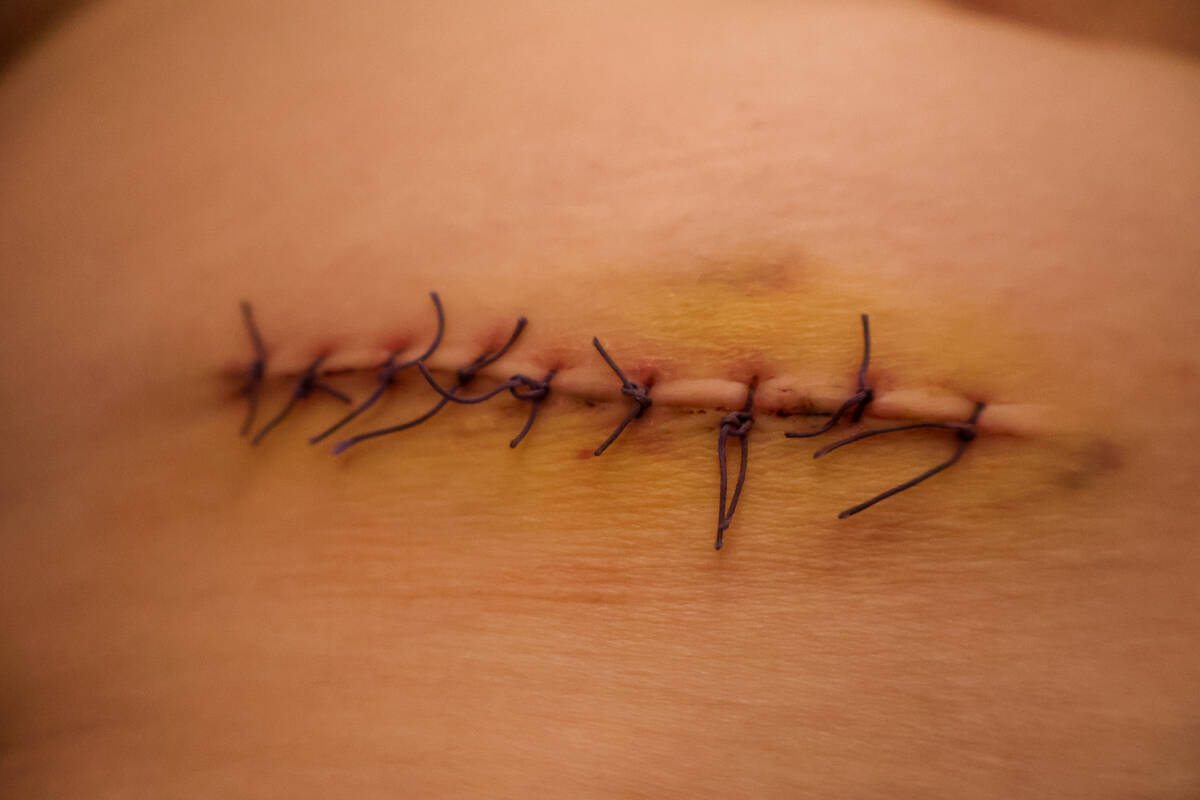Scars are a part of life and I find they are one of the most undercared-for parts of our tissues. While scars are relatively self-managed — the body does a wonderful job repairing itself with scar tissue after trauma — they benefit greatly from intentional care, by way of hands-on work, during the early stages of healing.
We can think of scar tissue as similar to drywall putty. When tissue experiences trauma, the body repairs the area by forming sticky connective tissue throughout the wounded areas. Scar tissue, once formed, is as strong as, if not stronger than, the original tissue.
Without appropriate movement, friction and influence, however, scar tissue can sometimes disrupt how the body moves around it. This is why I encourage those who have had surgery or wounds to receive hands-on support, through massage around potential scar sites, as soon as the incisions or wounds heal over. This approach, alongside movement and self-massage, can help a scar heal optimally and maintain a full range of motion in the area.
Read Also

In times of mandatory joy, try to find contentment
If we’re not feeling the joy at a time of year that seems to insist on over-the-top moments of happiness, we can allow ourselves to just try for fulfilled or content, farm family coach Kalynn Spain suggests.
Hands-on support can even help rehabilitate long-term scars. Both anecdotally and in research, manual work performed over scar sites has been shown to reduce pain and tension, support digestion and improve stress management. Abdominal scars can affect digestive system function, impact other organs, restrict circulation and influence how our nervous system perceives its environment — all factors that contribute to our overall stress levels.
Self-massage can be a powerful tool for scar tissue management and rehabilitation. Here are some effective techniques you can perform at home.
First things first
Only begin scar massage after your wound has fully closed and any scabs have naturally fallen off. If you’ve had surgery, consult with your healthcare provider before starting self-massage, typically around two to three weeks post-operation.
Wash your hands thoroughly before touching your scar. Apply a small amount of natural oil (coconut, olive, vitamin E) to reduce friction. Find a comfortable position where you can easily access your scar. Begin with light pressure, gradually increasing as comfort allows. Play with a variation of the below techniques, pausing or moving slowly if you feel any tension elsewhere in your body.
- Circular motions: Using your fingertips, make small circular movements around and directly on the scar. Move in both clockwise and counterclockwise directions for two to three minutes.
- Pulling/stretching: Gently pull the skin on either side of the scar away from the centre line. Hold for 30 seconds, then release. Repeat three to five times.
- Friction technique: Place two fingers on the scar and move the skin back and forth perpendicular to the scar line. This helps break up adhesions beneath.
It is normal for scar work to sometimes be accompanied by emotions, as well as memories of the original trauma. Many people even report an apprehension or anxiety around touching their own scars. Create space for yourself to notice and breathe with any emotional or physiological changes in sensation that you might notice throughout your work with your scar — or, if working on yourself feels overwhelming, seek professional support for hands-on care.















